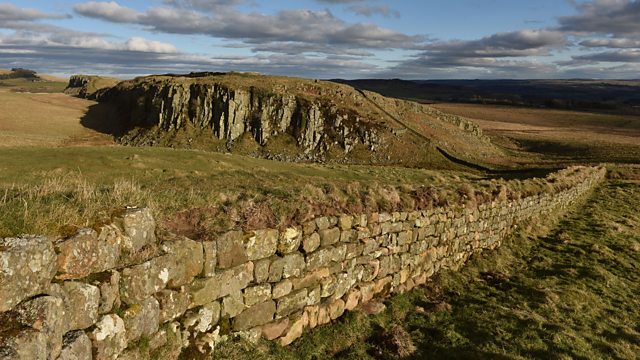
The Hidden History of the Wall
Cultural sociologist Rachel Hurdley uncovers what walls tell us about how we live from Iron age round houses to Victorian mansions, medieval halls to terraced workers cottages.
Cultural Sociologist Rachel Hurdley travels round England and Wales to uncover what walls tell us about how we live, from iron age roundhouses to Victorian mansions, medieval halls to terraced workers’ cottages, castles to the domestic interiors of today.
Rachel explores how walls, which we often take for granted, define the spaces we inhabit and make sense of everyday life and our place in the world, talking to a range of experts and academics including architectural writer Jonathan Glancey.
She tries her hand at making wattle and daub for roundhouses at Castell Henllys in Wales, with archaeologist Dr David Howell . She climbs through the thick stone walls of the Norman castle at Conisbrough in South Yorkshire, with buildings archaeologist James Wright and English Heritage curator Kevin Booth.
From the top of the tower, Rachel explores ideas of status and wealth, where building the tallest tower was as much about impressing the neighbours, as it was about military defence and protecting the vast wealth of the aristocratic elite. She also visits St Fagans National Museum of History Wales – a living museum of vernacular buildings throughout the ages.
Rachel looks at the way walls have redefined our living spaces from medieval times, such as the longhouses where farmers lived side by side with their animals and the great medieval halls. Here, daily life carried on in one space – masters and servants - until the ruling family was wealthy enough to seek privacy by building first floor solars. Now in modern day Britain, privacy can be at a premium in warehouses and factories converted into rented accommodation to meet to housing demand in sought after areas such as Hackney in London.
She also hears stories of horror and superstition – people and animals incarcerated in walls – as well as the use of burn marks at Gainsborough Old Hall in Lincolnshire to keep evil spirits away and visits one of the oldest medieval houses to survive in England, the National Trust’s Ightham Mote in Kent, to see centuries of change through its walls with conservation architect Stuart Page and collections manager Amanda Doran,
She looks at how fashions and styles have changed with a visit the Museum of the Βι¶ΉΤΌΕΔ where Director Dr Sonia Solicari tells Rachel more about social change through the Museum room sets. Wallpaper was a game changer, a much cheaper alternative to tapestries or rich wall paintings. She hears some surprising facts - the introduction in the 18th century of wallpaper tax, and also how the arsenic in some of the wallpaper pigments was poisoning people. Yet it was the industrial revolution which brought wallpaper and the other mass produced trappings of the home to almost everyone and a chance to curate our spaces - like those of British born Caribbean playwright and artist Michael McMillan, who remembers from his childhood the power of the front room to impress and reveal who we are.
Presenter: Rachel Hurdley
Producer: Sara Parker
Executive Producer: Samir Shah
A Juniper production for Βι¶ΉΤΌΕΔ Radio 4
Last on
Broadcast
- Wed 20 Dec 2023 11:30Βι¶ΉΤΌΕΔ Radio 4
